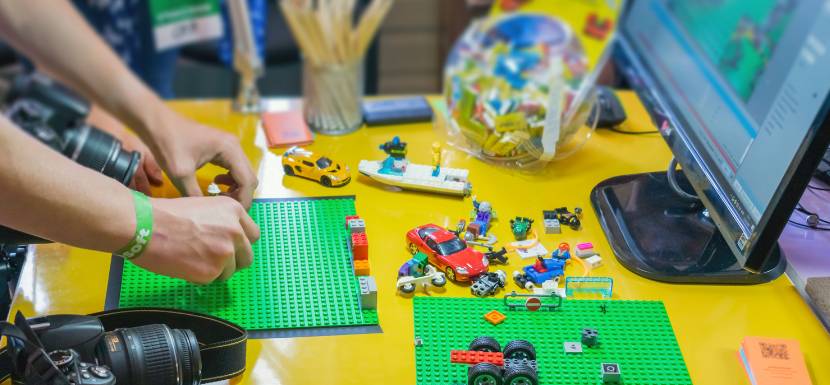LEGO SERIOUS PLAY (LSP): Solving Business Challenges Through the Power of Play

Image Source: Canva
Our brain is one of the most miraculous forces in the universe, and learning how to master it is one of the keys to our success. A unique way to unleash this force is by playing.
The LEGO® SERIOUS PLAY® (LSP) method could help businesses and people solve critical challenges and create strategies. The LSP is a facilitated thinking, communication and problem-solving technique that can be used by organizations, teams, and individuals. It draws on extensive research from the fields of business, organizational development, psychology, and learning. It is based on the concept of “hand knowledge.”
The history begins in 1995, when Kjeld Kirk Kristiansen, the grand child of the founder of LEGO® started to lead the company. While the company was successful, a new strategy was needed. At the same time, Johan Roos and Bart Victor, two professors from the IMD business school in Lausanne, were looking into different ways of creating strategies. Kristiansen connected with the two professors, and over the next couple of years, they implemented their strategy concept using LEGO bricks instead of usual methods, like if words, Post-it Notes, and whiteboards. The business school professors experimented with and became more adept at building with LEGO® bricks. However, something still did not click. The bricks alone did not result in new thinking and more imagination. Paradoxically, what was missing was what LEGO® as an organization knows at its core: how humans learn and develop. To address this, Robert Rasmussen became involved in 1999. From that point on, they worked and developed the method.
LEGO® SERIOUS PLAY® is based on a set of fundamental beliefs about leadership and organizations:
- Leaders don’t have all the answers.
- Their success is dependent on hearing all voices in the room.
- People naturally want to contribute, be part of something bigger, and take ownership
- All too often, teams work sub-optimally, leaving knowledge untapped in team members.
- We live in a world that can be described as complex and adaptive, and allowing each member to contribute and speak results in a more sustainable business.
Creating the Mission and Vision Through LSP
Company or departmental vision or mission statements are often long. They have been formulated by several people who all wanted to include something. They are not always memorable, and many employees can’t recite them, and many don’t even understand what they mean, let alone support them. In 2017, Derek Good, LEGO Serious Play facilitator, had a workshop and helped a team create a short, succinct, and memorable vision or mission statement from the existing one. The team was formed from a group of leaders in a university’s brand and marketing department.
After two warm up exercises, the group was asked to create two models:
- Representing their ideal working environment and
- Representing what they could do to demonstrate living the current mission.
Next, each person was asked to build a model that represented an aspect of trust. Each person was then asked to place a red brick on the most important element of their individual model.
Then, in pairs, they formed a shared model and were asked to eliminate any excess bricks while still holding the same meaning of the newly combined model. They did several rounds of this, and they were consistently told that they may still have too many bricks, and so long as they kept the essence of the meaning, they were to remove any excess bricks they could. The pairs were able to reduce the models significantly.
They were then paired in three groups, and the facilitator shared the vision and mission statement on a screen and asked the participants to use the same procedure: What words can be reduced from the statement but keep the essence of the meaning? After three rounds of discussion, they managed to have a new vision and mission statement: a seven-word mission statement. The initial one had 29 words.
This was done in less than 30 minutes, something that in the past took them more hours, but not with the expected result. The people involved were extremely enthusiastic about the process. It is amazing how our minds can send us the right solution to our challenge by playing.
The LSP method is not based on any new or groundbreaking science. Instead, it is grounded in action research and evidence drawn from a range of existing science disciplines and proven research within these fields. The dominant disciplines are Constructivism, Neuroscience, Flow, Play, and Imagination. Also, if you want to learn more about how to create your own strategy for your company of your activity, you can check our Certified Strategy and Business Planning Professional, which can help you better understand how strategy works.
